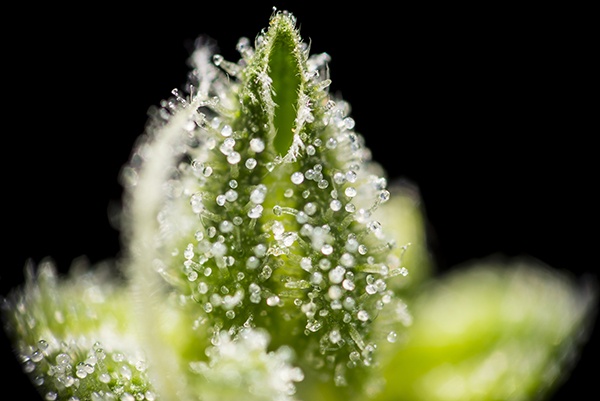The legalization of medical marijuana is in sight for Canada, but before that happens the public needs to know the facts (pro and con) of cannabis. You may have a preconceived notion of marijuana through television and movie messages, but it’s best to do your own research to be as informed as possible.
What is Marijuana?
Marijuana is a slang term for the flowers, stems, seeds and leaves that come from the plant Cannabis Sativa. The plant originates from Asia, specifically warm and tropical climates, but can grow and be grown around the world. Marijuana has several slang/street terms such as pot, grass, weed, hemp, hash, ganja and many others.
There are hundreds of chemical substances that can be found in cannabis and over 100 of these chemicals are called cannabinoids, meaning they are only found in the cannabis plant.

Tiny, clear hairs that protrude from the flowers and leaves of cannabis are called trichomes, which is what cannabinoids are made of. Cannabinoids can change how the cell receptors in the brain and body behave.
Most Researched Cannabinoids
THC (delta-9-tetrahydrocannabinol)
THC has both therapeutic and harmful effects. The way that a person’s brain and body responds to cannabis is primarily attributed to THC. The concentration levels (also called potency) of THC is a measuring tool for the strength of different strains of cannabis.
The potency of THC is presented as a percentage by the weight of a specific part of the cannabis plant. For example, the THC potency in dried cannabis had an average of 3% in the 1980s compared to 15% currently. There are a few strains out there that can have an average as high as 30% THC. The amount of THC found in hashish specifically can be as high as 60%. Hash oil can contain a THC amount up to 80%. The strongest cannabis products are shatter, wax, honeycomb and rosin which can contain up to 90% THC. Flowers and leaves from the cannabis plant that contain less than 0.03% THC are classified as hemp.
Some of the therapeutic effects of THC are euphoria, a sense of well-being, as well as relaxation. Some of the harmful effects are paranoia and disorientation.
CBD (cannabidiol)
CBD is a cannabinoid that is not psychoactive and can lower or block some of the effects of THC when the amount of CBD is equal to or higher than the amount of THC.
Terpenes
Terpenes is a chemical that is made and stored in the trichomes of cannabis. This is the chemical that gives cannabis its smell, which has been described as like pine, spice, skunk, citrus and diesel.
Cannabis Products
Many cannabis products that can be made using the flowers and leaves of the cannabis plant are dried herbal material, oil, concentrates, hash, food and drinks.
Cannabis can come in a variety of forms:
- Kief – a powder made from trichomes
- Hashish – a resin that comes from kief when it is pressed; can be soft and flexible or firm and brittle
- Hash oil (errl) – also known as butane hash oil or butane honey oil (BHO), is a thick and sticky liquid made by mixing cannabis with petroleum-based solvents such as butane.
- Shatter, budder, wax, honeycomb and rosin – also made from BHO using different processes
These products can be ingested in a number of ways such as:
Smoking
- Joints/spliffs – cannabis leaves wrapped in partially translucent paper
- Pipes/bongs – heated and breathing in smoke
- Vaping – breathing in cannabis vapours through a vaporizer
- Dabbing – breathing in vapours from heating cannabis concentrates such as shatter with a blowtorch
Eating or Drinking
- Teas
- Sodas
- Baked goods
Medicinal Values
Several clinical trials and studies have been conducted regarding the medical attributes of cannabis, but have been hindered by the illegalization of the plant. Although the studies have been limited, they have produced results that have impacted healthcare worldwide.
This is a general breakdown of the medical effects of marijuana based on current clinical trials, studies, and surveys:
| Parkinson’s | Cannabis use improved pain and movement |
| Epilepsy | Improvement in seizures, stress was decreased, sleep improved and memory/concentration was better |
| Multiple Sclerosis | Cannabis reduces the stretch reflex in patients with multiple sclerosis |
| Cancer – chemotherapy | THC decreased nausea and vomiting in 23 of 36 (64%) patients |
| Sleep Disorder | THC treatment yielded a shift in EEG (electroencephalogram) power toward delta and theta frequencies and a strengthening of normal rhythms in the sleep |
| HIV (human immunodeficiency virus) | Smoked marijuana has helped improve food intake |
| Neuropathic Pain (pain caused by damaged nerves) | A single inhalation of 25 milligrams of 9.4% THC herbal cannabis three times daily for five days reduced the intensity of pain, improved sleep quality, reduced anxiety and was well tolerated |
In recent research, scientists have reported that THC and CBD, as well as some other cannabinoids, have been effective in slowing growth and causing death in certain types of cancer cells. Animal studies have suggested that certain types of cannabinoids can reduce growth speed of some forms of cancer.
The clock is counting down till marijuana is legalized in Canada and the best way to be prepared for a change that will sweep the nation is to be properly educated and informed about the product.
Sources:
https://www.cannimed.ca/pages/why-cannabis-works

